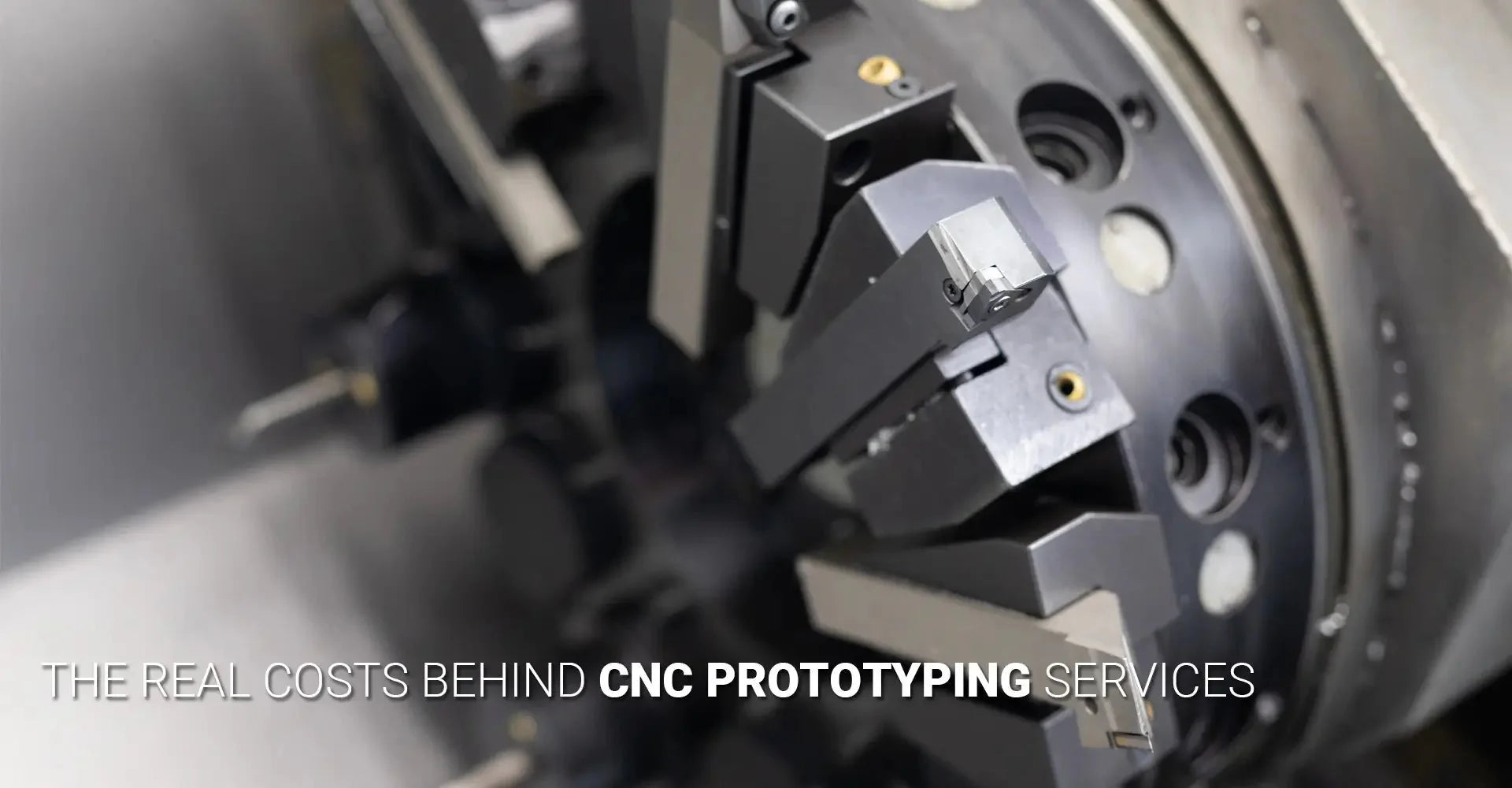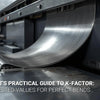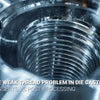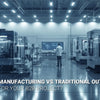What Are the Real Costs Behind CNC Prototyping Services?

What Are the Real Costs Behind CNC Prototyping Services?

Understanding the true costs of CNC prototyping can help businesses make informed decisions when developing new products. With material prices fluctuating and labor rates varying across regions, knowing what influences your bottom line is crucial for effective budgeting. This comprehensive guide breaks down all the cost factors involved in CNC prototyping to help you avoid unexpected expenses.
The average cost of CNC prototyping ranges from $100-$1,000 per part depending on complexity, material choice, and required tolerances. Simple plastic prototypes start around $100-$200, while complex metal parts with tight tolerances can exceed $1,000. Design complexity alone can increase machining time by 30-50%, directly impacting your final bill.
Before diving into specific cost factors, it's important to understand that CNC prototyping costs are not fixed. They vary based on multiple variables that you can often control to optimize your budget. Let's explore these factors in detail so you can make cost-effective decisions for your next prototyping project.
Table of Contents
- What Are the Key Cost Drivers in CNC Prototyping?
- How Do Labor and Regional Factors Affect CNC Pricing?
- Does Order Volume Actually Impact CNC Prototype Pricing?
- What Hidden Costs Exist in CNC Post-Processing and Finishing?
- Conclusion
What Are the Key Cost Drivers in CNC Prototyping?
When planning your CNC prototyping budget, several primary factors will significantly impact the final cost. Understanding these elements helps you anticipate expenses and identify opportunities for cost reduction without compromising quality.
Design complexity increases machining time by 30-50% for parts with features like undercuts and multi-axis geometry. Additionally, tight tolerances (±0.001") can quadruple costs compared to standard tolerances (±0.005"), while material selection creates vast price differences – from affordable ABS plastic at $3-$15/kg to premium stainless steel at $50-$200/kg.
The intricate relationship between design and cost cannot be overstated. Every additional feature, curve, or pocket requires more programming time, tool changes, and machine operations. For instance, a simple rectangular aluminum block with basic holes might cost $150, while the same part with complex contours, variable depth pockets, and tight tolerance features could reach $450 or more. Material waste also factors in—parts requiring removal of 80% or more of the stock material incur higher costs due to extended machining time and increased tool wear.
How Do Labor and Regional Factors Affect CNC Pricing?
Labor costs represent a significant portion of CNC machining expenses, accounting for 20-35% of the total cost. These rates vary dramatically based on geographic location, with substantial differences between manufacturing hubs in North America, Europe, and Asia.
North American CNC shops charge $40-$75 per hour for machining labor, while European facilities average $35-$60 hourly. Asian manufacturers offer the most competitive rates at $15-$30 per hour, potentially reducing overall project costs by 50-70% compared to Western counterparts when shipping and communication factors are properly managed.

While lower labor rates in Asia appear attractive, additional considerations include shipping costs (adding $50-$200 depending on size and weight), longer lead times (adding 1-3 weeks for international shipping), potential communication barriers, and quality assurance challenges. For time-sensitive projects, local manufacturing often proves more economical despite higher hourly rates. Many businesses find that mid-volume production (20-100 units) reaches a break-even point where Asian manufacturing becomes cost-effective despite shipping expenses.
Does Order Volume Actually Impact CNC Prototype Pricing?
One of the most significant cost reduction opportunities in CNC prototyping comes from ordering multiple units simultaneously. The relationship between quantity and per-unit cost demonstrates powerful economies of scale that can transform project economics.
Ordering in batches dramatically reduces per-unit costs—a single prototype might cost $500, while ordering 10 units drops the per-piece price to approximately $300 each. For larger runs of 50+ units, costs can decrease by up to 60%, bringing per-unit prices down to around $120 while maintaining identical quality and specifications.
These cost reductions stem from spreading one-time expenses across multiple units. Programming, setup, and CAD/CAM preparation—often costing $200-$500—remain largely fixed regardless of quantity. Tool path optimization, fixture creation, and quality control programming are performed once but benefit every unit produced. Additionally, material purchasing at higher volumes typically qualifies for bulk discounts of 10-25%. For products in development, consider ordering 3-5 units initially rather than a single prototype—you'll gain redundancy for testing while significantly reducing per-unit investment.
What Hidden Costs Exist in CNC Post-Processing and Finishing?
The machining process represents only part of the total CNC prototyping cost. Post-processing and finishing operations add significant expenses that many clients overlook during initial budgeting, leading to unexpected cost increases during production.
As-machined finishes add no additional cost, while basic treatments like bead blasting add $10-$20 per part. Premium finishes such as anodizing increase costs by $25-$50 per unit, and specialized coatings like powder coating add $30-$70 depending on part size and complexity. These treatments impact both aesthetics and functional performance, especially important for automotive applications where durability and appearance are critical.
Beyond cosmetic considerations, finishing processes often provide critical functional benefits worth their added cost. Anodizing aluminum parts increases surface hardness by 2-3x and provides corrosion resistance, extending product lifespan. Bead blasting removes machining marks and creates consistent surface textures for improved part handling and assembly. For medical or food-grade applications, specialized finishes like electropolishing (adding $40-$90 per part) create microscopic smoothness that prevents bacterial growth. Consider both immediate aesthetic requirements and long-term performance benefits when budgeting for finishing operations.
Conclusion
Making informed decisions about CNC prototyping requires understanding all cost factors—from design complexity and material selection to regional manufacturing differences and finishing requirements. By optimizing these variables, you can reduce expenses without compromising quality or performance.
The most effective cost-reduction strategies include simplifying non-critical design features, selecting appropriate tolerance specifications, ordering multiple units when possible, and choosing finishes based on functional requirements rather than purely aesthetic considerations. Remember that investing in quality prototyping often reduces overall product development costs by identifying design issues early.
External Links
[rapid prototyping](https://www.stratasys.com/en/resources/blog/key-advantages-of-rapid-prototyping/)[^1]
[cost of CNC prototyping](https://www.rapiddirect.com/blog/cnc-prototyping-cost-breakdown/)[^2]
[CNC Post-Processing and Finishing](https://fastradius.com/capabilities/cnc-machining/finishing/)[^3]
---
[^1]: Explore this link to understand how rapid prototyping can enhance product development and reduce time to market.
[^2]: This resource will provide insights into the various elements that affect CNC prototyping costs, helping you budget effectively.
[^3]: Learn about the significance of post-processing in achieving high-quality CNC prototypes and the techniques involved.
-
Posted in
Rapid Prototype





